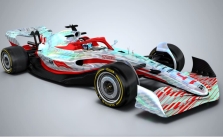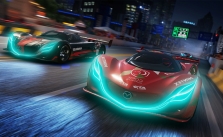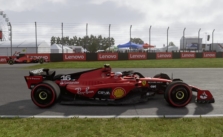F1 22: How to Drive with Manual Gears
If your primary form of transportation is a car, you’re probably well familiar with how it works. The engine starts, you check your mirrors, you put it in drive, and you go. This is all you need for day-to-day errands and getting from place to place, but this isn’t the only way a car can be. Cars with this simple method of operation have automatic gears, but higher-performance cars, especially race cars, typically use manual gears. This means that the driver has to manually shift in and out of gears as the vehicle picks up speed. Cars with Manual gears grant the driver much more control, which is why it is so important for race cars to have them.
This is particularly true in F1 22, where your car is capable of traveling at 200+ mph and every ounce of control is mandatory. If you want to be an F1 22 pro, you’ll need to ditch the automatic shift for manual, and this guide will help you to do just that.
-
Will Manual Gears Increase Speed?
If you’re wondering if manual gears are really all that worth it for the extra hassle, let me tell you that they absolutely are. Using manual gears over automatic does give you more control, but with that higher level of control comes a significant increase in speed. Learning the optimal shifting times can unlock performance you didn’t even know your car had, and it is a much more engaging way to play the game. In single-player, playing either way is fine. The AI bots can be challenging but nothing you can’t handle with a moderate amount of effort. However, once you take your skills online, you’ll be facing pro F1 players who all likely use manual gears to get the most out of their vehicles. In this situation, you’re going to want every advantage you can get.
-
Tips for Upshifting
Once you’ve mastered the art of manual shifting, you’ll more or less be able to feel when it’s just the right time to act. But, when you first start, you’ll need to look for clues and pay close attention to learn those times. Thankfully, there are a few indicators built right into your steering wheel that will let you know when it’s time. The first and most obvious are the shift lights along the top of the wheel. These LEDs glow from green to red to purple as you build up speed. The perfect time to shift up is when you see the first purple LED light up. It is also possible to use the RPM counter on the bottom of the wheel’s readout, though this is much smaller and more difficult to see. If you do use that, you’re going to want to shift up at about 11,500 RPM.
-
Tips for Downshifting
While shifting up is going to be the first thing on your mind, it is just as important that you learn how to properly downshift. Correct downshifting can help you to slow your car down quickly for turns. This combined with perfect upshifting for faster acceleration will make you a force to be reckoned with. Downshifting is a little more tricky since there aren’t any dedicated indicators as there are for upshifting, but there are a few ways to know when it’s the right time. If you’re already used to using the upshift LEDs, these can also be helpful for downshifting. As you decelerate, the LEDs will start to go out from right to left. When that final LED on the left side goes out, that is your mark to downshift. The thing is, this happens extremely quickly, so you’ll need to downshift just as quickly.
-
Engine Braking
A helpful technique to know for downshifting is called engine braking. This is when you downshift slightly early to force your engine to slow the back wheels down faster. This is a great method to use for that final lap when you have to clutch out your lead. Be careful though, downshift too early can lock those rear wheels and cause you to spin out when you enter the corner.
-
Holding Gears
An advanced gear shifting technique called holding gears is crucially important for the more winding tracks. If you’re either in a turn or entering a turn but you’re at the optimal upshifting point, doing so can cause your car to become unstable. Shifting up along with steering is often too much for the car to handle and will result in tragic oversteer. It is much better to hold onto that gear until you can safely shift up.
F1 22: How to Improve Your Racing Performance – Essential Tips & Tricks















